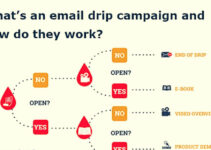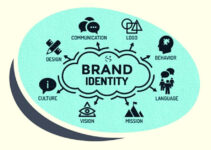Introduction
Content marketing is one of the main marketing strategies that businesses and companies use in order to attract and retain customers through their audio/video/written content. It allows you to spread brand awareness and remain in the minds of customers when they go out shopping. Today, we’ll discuss what is content marketing; its significance with statistics, how it works, how to start it, and the role of SEO and social media in the process.
What is Content Marketing?
Content marketing is the process of creating and distributing useful and pertinent content in the form of videos, emails, social media posts, white papers, newsletters, and blogs to the potential and existing customer market. If you do correctly, your content would promote your expertise and clarify to the audience that you value them.
The consistency in content marketing strategy allows you to develop and nurture relationships with your current and potential customers. When the target customers perceive your company as a partner that requires your feedback and guidance in terms of developing their offers, then they would choose your product/service.
Significance of Content Marketing
Content marketing is a successfully proven strategy and it provides you with a competitive edge in the market. Some of the statistical facts about content marketing are as follows;
- 72% of the B2B marketers say that content marketing amplifies user engagement and generates more leads
- Companies and businesses that follow content marketing strategy, their growth rate is higher approximately 30%
- 47% of the customers say that they study some content before contacting the sales representative
- Companies that have blogs of their offers, they tend to generate 67% more lead than without blogs
How Content Marketing Works
When someone searches for a product/service, then your content would attract the potential lead and make a case of your offer, and that would ultimately close the deal. If you want better results, then you should use effective content at various stages of the sales cycle.
If you find it complicated, then we’ll clarify the process for you in the simplest possible way. How content marketing works, some of its various stages in the sale cycle are as follows;
Awareness
Awareness is the very first stage in the sale process, and the focus of your content is on your audience. You should write such content that would raise questions in their minds, address challenges they’re facing, and pain points. It increases the possibility of connecting with them. Your content should follow a “how-to” and educational approach in the awareness stage. Leave the selling approach for later stages like consideration and closing.
Newsletters, videos, e-books, blog posts, and articles offer some of the best content in the awareness stage.
Examples:
- “Questions to Ask before Hiring Architecture” is an e-book offered by the architecture company
- A hotel publishes a post and it’s about how to plan a menu of the graduation party in the spring season
- “5 ways to choose the right bike trip” is a short video created by a YouTube bike touring channel
Consideration
Your content should provide useful and diverse information in the consideration stage of the sale process. Your focus is on educating the readers about various features and functions and how they would solve the needs of customers.
Worksheets/checklists, how-to videos, how-to articles, and case studies provide very useful content in the consideration stage.
Examples:
- A catering company outlines a case study about organizing an event successfully by focusing on the benefits it would offer “How to make sure that your caterer using sustainable practices.”
- A tech company offers a checklist focusing on the functions and features that make its services best possible, and it’s under the title of “10 ways to improve your smartphone customer service”
Closing
Content marketing is very important when it comes to closing the deal with potential customers. Your goal is to increase the sale and remind yourself that you’re the best seller and your offers are great. Your marketing message should be to prove your knowledge and expertise and differentiating the benefits that you’re offering.
Research reports, product videos, buyers’ guides, user-generated content, and case studies are the best content in the closing stage.
Examples:
- A fashion designing company develops short videos in order to show its diverse expertise and work variety from different industries
- A research report by a consulting company proves that businesses have higher growth if they do strategic planning, offer services, and evaluate their performance from external firms.
How to start Content Marketing
Content marketing is an overwhelming experience for some businesses and companies. However, it doesn’t have to be like this. In fact, some content marketers make the whole process sustainable and manageable. Some of the main steps in how to start content marketing are as follows;
Recognize your Target Audience
First of all, you have to know your target customers in terms of their preferences, challenges, priorities, and goals, before creating content for them. You should study the description of different segments of the market, and choose one of them. If you don’t have a description, then you should start creating the profile of your target audience before writing about them.
Choose Right Format
There are different formats to use in different stages of the sale cycle, therefore you should choose the right format while creating content. You should choose such a format that would best present your values. It could be a checklist, a short video, or a case study depending upon the targeted audience and the sale cycle.
Who will Write/Edit?
As they say “your customer is your boss” and it’s absolutely right. They’re rightfully the judge of checking the quality of your offer. You should utilize the right internal/external resources in order to produce the work. It doesn’t matter who produces the content, make sure to get it reviewed and checked by an external person to give you a better-unbiased insight.
Distribution
How you’re going to share your content to the target audience by an event, print media, email, or posting it on your website. You should know what platform your audience is using, and what format would attract their attention. For instance, you should consider using a worksheet or checklist by using posts on social media, an article link via email, or sending a buyer’s guide is a good follow-up pitch.
Scheduling
After recognizing your target audience and choosing the right format, you should develop short-term goals, and set realistic targets for the content that you have created relevant to your resources and budget. Most importantly, you should keep tracking the time that how long it would take you to create the content, and use that time for scheduling.
Select Best Practice
You should write compelling content and avoid using jargon that only some people would understand. Your content should be short, relevant, and address how-to questions.
Role of SEO & Social Media in CM
SEO
Content marketing allows your potential customer to reach out to your business, and you have to use SEO (search engine optimization) for this. Some of the few elements to consider for SEO are as follows;
Recognizing Keywords
You have to use the right keywords as the basis of your SEO efforts. It is significant that you should use all the relevant words and phrases relevant to your product/service that people are using in the searches. However, if you’re using the right keywords, then it would help you to bring more traffic to your platform. Some of the main types of keywords are;
- Specific: it’s an integration of various elements like adding relevant details, pain-points, and industry focus
- Relevant: using the keywords that match your product, service, and expertise that you’re offering
- Plain-language: you should write the language that your audience is using it
Delivering as you Promised
The success of your SEO depends on how good is your content in terms of application whether it works or not. The search engine analyzes various elements like its relevance, reviewing the content, and whether it does what the title line says or not. However, the significance of keywords relies on keywords and the content. Some of the main guidelines are as follows;
- Focus on one/two keywords: you should avoid using too many keywords in the content, just use it a few times
- Keywords in Title: you should precisely be clear about what the article is all about
- Keywords in Body: distribute the keywords throughout the article
- Stick to Topic: good articles offer advice what they claim it in the title
Social Media
After publishing the content, you should share it out on various social media platforms like Facebook, Twitter, LinkedIn, YouTube, Instagram, and others. It’s the simplest and easiest way to promote your content and attract user engagement. It works in the following steps;
- High Potential Channels: it means social media platforms that your target audience is using, and where they stay active. It would increase your chances of getting connected with them.
- Match with the Channel: different channels on social media follow different types of tones like fun, humor, literary, serious, etc. You should study the tempo of the required channel, and then create the post accordingly
- Test & Modify: you should follow the trial and error approach; keep tracking of your content in terms of user engagement. If a channel is providing more user engagement, then it means it’s good.
Conclusion: What is Content Marketing? How it works with Examples
After an in-depth study of what is content marketing; how it works, and how to start it, we have realized that content marketing is essential for businesses in today’s competitive market. If you want to launch a content marketing strategy for your business, then follow and practice the abovementioned steps while developing content.

Ahsan Ali Shaw is an accomplished Business Writer, Analyst, and Public Speaker. Other than that, he’s a fun loving person.


